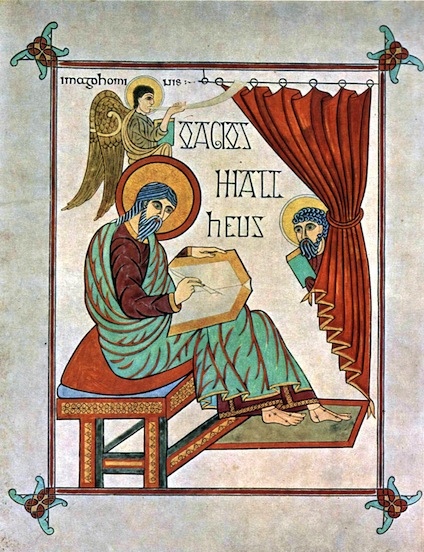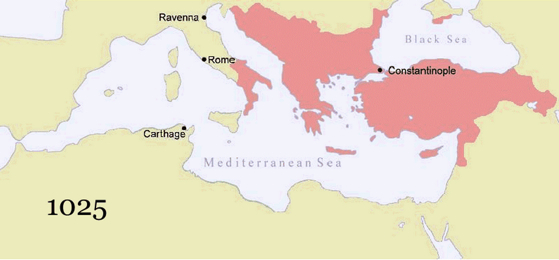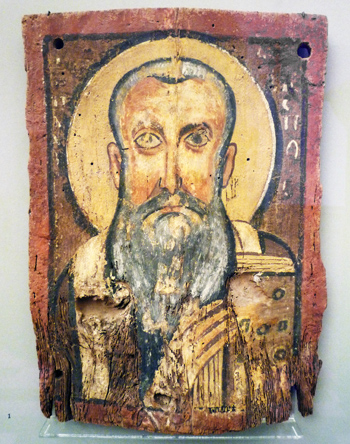The Dark Ages?
Petrarch, an Italian poet and scholar of the fourteenth century, famously referred to the period of time between the fall of the Roman Empire (circa 476) and his own day (circa 1330s) as the Dark Ages.

Matthew from the Lindisfarne Gospels, made on the island of Lindisfarne off the coast of England, late seventh century or early eighth century.
Petrarch believed that the Dark Ages was a period of intellectual darkness due to the loss of the classical learning, which he saw as light. Later historians picked up on this idea and ultimately the term Dark Ages was transformed into Middle Ages. Broadly speaking, the Middle Ages is the period of time in Europe between the end of antiquity in the fifth century and the Renaissance, or rebirth of classical learning, in the fifteenth century and sixteenth centuries.
Not So Dark After All
Characterizing the Middle Ages as a period of darkness falling between two greater, more intellectually significant periods in history is misleading. The Middle Ages was not a time of ignorance and backwardness, but rather a period during which Christianity flourished in Europe. Christianity, and specifically Catholicism in the Latin West, brought with it new views of life and the world that rejected the traditions and learning of the ancient world….

Map of Medieval Europe in 1190
The visual arts prospered during Middles Ages, which created its own aesthetic values. The wealthiest and most influential members of society commissioned cathedrals, churches, sculpture, painting, textiles, manuscripts, jewelry and ritual items from artists. Many of these commissions were religious in nature but medieval artists also produced secular art. Few names of artists survive and fewer documents record their business dealings, but they left behind an impressive legacy of art and culture.

The Byzantine Empire in 1025
Byzantium
Unlike Western Europe in the Middle Ages, the Byzantine Empire is not romanticized in  television and film. In the medieval West, the Roman Empire fragmented, but in the Byzantine East, it remained a strong, centrally-focused political entity. Byzantine emperors ruled from Constantinople, which they thought of as the New Rome. Constantinople housed Hagia Sophia, the world’s largest church until 1520, and was a major center of artistic production.
television and film. In the medieval West, the Roman Empire fragmented, but in the Byzantine East, it remained a strong, centrally-focused political entity. Byzantine emperors ruled from Constantinople, which they thought of as the New Rome. Constantinople housed Hagia Sophia, the world’s largest church until 1520, and was a major center of artistic production.
The Byzantine Empire experienced two periods of Iconoclasm (730-787 and 814-842), when images and image-making were problematic. Iconoclasm left a visible legacy on Byzantine art because it created limits on what artists could represent and how those subjects could be represented. Byzantine Art is broken into three periods. Early Byzantine or Early Christian art begins with the earliest extant Christian works of art c. 250 and ends with the end of Iconoclasm in 842. Middle Byzantine art picks up at the end of Iconoclasm and extends to the sack of Constantinople by Latin Crusaders in 1204. Late Byzantine art was made between the sack of Constantinople and the fall of Constantinople to the Ottoman Turks in 1453.
In the European West, medieval art is often broken into smaller periods. These date ranges vary by location:
c.500–800: Early Medieval Art
c.780–900: Carolingian Art
c.900–1000: Ottonian Art
c.1000–1200: Romanesque Art
c.1200–1400: Gothic Art
Candela Citations
- Reading: The Medieval and Byzantine Eras. Provided by: Luman Learning. Located at: https://courses.lumenlearning.com/masteryart1/chapter/reading-the-medieval-and-byzantine-eras/. License: Public Domain: No Known Copyright
